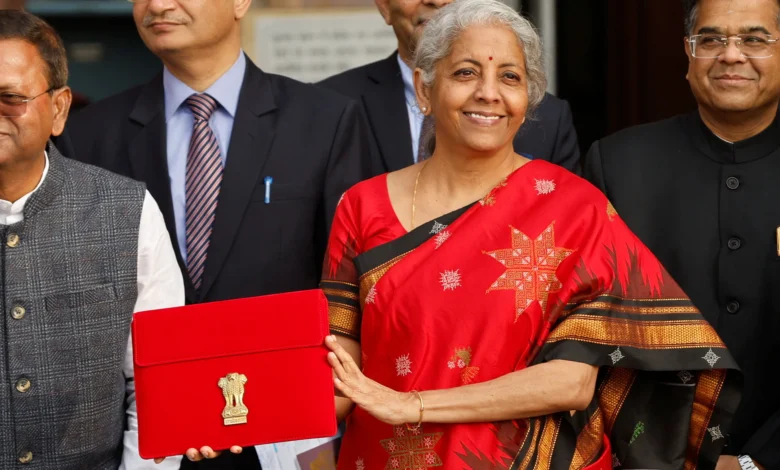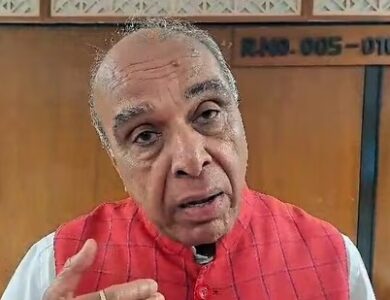
The Union Budget for the financial year 2025-26 was presented by Finance Minister Nirmala Sitharaman, focusing on boosting economic growth, improving social infrastructure, and fostering sustainable development. This budget aims to strengthen key sectors like agriculture, MSMEs, healthcare, education, and digital innovation while ensuring financial stability.
Vision of Union Budget 2025-26
The budget revolves around the theme of ‘Viksit Bharat’ (Developed India), emphasizing:
- Zero Poverty: Policies to uplift marginalized communities.
- Quality Education for All: Increased funding for schools and higher education.
- Affordable Healthcare: Strengthening medical infrastructure and insurance schemes.
- Skilled Workforce: Creating employment opportunities for youth and women.
- Agricultural Advancement: Enhancing farm productivity and sustainability.
- Boosting Exports and MSMEs: Strengthening small businesses and trade networks.
Key Budget Allocations and Reforms
1. Agriculture & Rural Development
To ensure food security and empower farmers, the government has introduced various programs:
- Prime Minister Dhan-Dhaanya Krishi Yojana: Covers 100 districts to improve farm productivity, crop diversification, and irrigation.
- Mission for Aatmanirbharta in Pulses: Focused on Tur, Urad, and Masoor to reduce dependence on imports.
- Edible Oil Self-Sufficiency: National Mission for Edible Oilseeds to promote domestic production.
- Vegetable & Fruit Promotion Program: Enhancing market linkages and farmer income.
- Makhana Board in Bihar: Strengthening makhana (fox nut) production and marketing.
- Kisan Credit Card Expansion: Loan limit increased from INR 3 lakh to INR 5 lakh.
- Investment in Rural Economy: Skilling programs and employment generation to reduce migration to cities.
2. MSMEs & Startups
MSMEs are the backbone of India’s economy, and the government has taken steps to improve their access to credit and markets:
- Increased Credit Guarantee: Enhanced loan cover for MSMEs from INR 5 crore to INR 10 crore.
- Startup Fund of Funds: A fresh INR 10,000 crore allocation to support new businesses.
- Customized Credit Cards: Micro enterprises registered on the Udyam portal to get INR 5 lakh credit.
- Encouraging Women Entrepreneurs: Loans up to INR 2 crore for SC/ST women.
- Make in India Support: Investment and policy backing for clean tech, renewable energy, and advanced manufacturing.
3. Infrastructure Development & Investment
A major push is being given to infrastructure development with a focus on connectivity and urban planning:
- Urban Challenge Fund: INR 1 lakh crore allocated for city redevelopment and sanitation.
- Affordable Housing Boost: SWAMIH Fund 2 with INR 15,000 crore to complete housing projects.
- Jal Jeevan Mission Expansion: Ensuring 100% rural tap water coverage by 2028.
- PPP Mode Projects: States encouraged to bring infrastructure projects under Public-Private Partnership models.
- Smart City Expansion: Further development of digital governance and mobility in urban areas.
4. Technology & Innovation
To make India a global leader in technology, research, and digital transformation, several initiatives have been introduced:
- Deep Tech Fund: INR 20,000 crore allocated for research-driven startups.
- 50,000 Atal Tinkering Labs: Encouraging STEM education in government schools.
- National Geospatial Mission: Digitizing land records and urban planning.
- AI & Robotics Research Centers: Increased funding for artificial intelligence, automation, and semiconductor development.
5. Energy & Sustainability
A major focus is on renewable energy and reducing carbon emissions:
- Nuclear Energy Expansion: 100 GW nuclear power target by 2047.
- Green Hydrogen & EV Support: Incentives for clean fuel production and electric vehicle manufacturing.
- Shipbuilding & Maritime Growth: INR 25,000 crore Maritime Development Fund to boost the shipbuilding industry.
- Solar & Wind Energy Investments: Strengthening India’s position as a renewable energy hub.
6. Taxation & Financial Reforms
Several tax and regulatory changes have been proposed to simplify compliance and encourage investments:
- New Income Tax Bill: Simplifying the tax structure for individuals and businesses. click here to know more about it.
- Custom Duty Rationalization: Lower tariffs on essential imports for the manufacturing sector.
- 100% FDI in Insurance: Increasing foreign direct investment in the insurance sector from 74% to 100%.
- Improved Ease of Doing Business: Reduction of red tape and regulatory burdens.
- GST Compliance Simplification: Faster refunds and reduced documentation for businesses.
7. Healthcare & Social Welfare
Strengthening the healthcare sector remains a top priority:
- 10,000 New Medical Seats: Expanding medical education and hospital infrastructure.
- Day Care Cancer Centers: 200 centers to be established across India.
- PM Jan Arogya Yojana Expansion: Extending healthcare benefits to gig workers and unorganized sectors.
- Nutrition Support: Enhanced allocations under the Saksham Anganwadi and Poshan 2.0 program.
8. Export Promotion & Global Trade
The government aims to enhance India’s position in global trade:
- Export Promotion Mission: A structured approach to expand trade and reduce import dependence.
- BharatTradeNet (BTN): A new digital trade documentation system.
- Support for Small Exporters: Assistance to MSMEs in meeting international standards and certifications.
- Incentives for High-Value Exports: Increased support for IT, pharmaceuticals, and auto sectors.
Conclusion: Driving India’s Growth in 2025-26
The Union Budget 2025-26 lays a strong foundation for India’s economic transformation. By focusing on infrastructure, digital innovation, entrepreneurship, and social welfare, the government aims to position India as a global economic powerhouse. These reforms are expected to create jobs, boost investments, and enhance overall economic resilience in the coming years.
If you want to know about more then this information click here.
Stay Updated & Take Action!
For more insights and detailed analysis on the Union Budget 2025-26, subscribe to our newsletter. Share your thoughts in the comments and let us know how these policies impact you!





One Comment